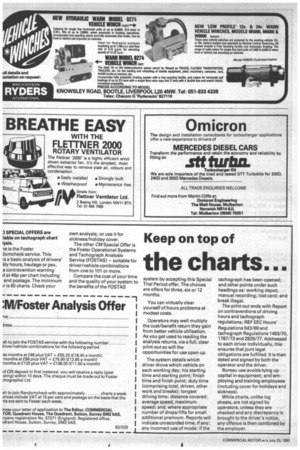Keep on top of
Page 48

If you've noticed an error in this article please click here to report it so we can fix it.
the charts...
system by accepting this Special Trial Period offer. The choices are offers for three, six or 12 months.
You can virtually clear yourself of hours problems at modest costs.
Operators may well multiply the cost/benefit return they gain from better vehicle utilisation. As you get used to reading the analysis returns, via a full, clear print-out so will the opportunities for use open up.
The system details which driver drove which vehicle on each working day; his starting time and starting point; finish time and finish point; duty time (comprising total, driven, other work and breaks); longest driving time; distance covered; average speed, maximum speed; and, where appropriate number of drops/lifts for small additional premium. Reports will indicate unrecorded time, if any; any incorrect use of mode; if the tachograph has been opened; and other points under such headings as: working depot; manual recording; lost card; and break illegal.
The print-out ends with Report on contraventions of driving hours and tachograph regulations; REF EEC Hours' Regulations 543/69 and tachograph Regulations 1463/70, 1787/73 and 2828/77. Addressed to each driver individually, this ensures that joint legal obligations are fulfilled. It is then dated and signed by both the operator and the driver.
Bureau use avoids tying up capital in equipment; and employing and training employees (including cover for holidays and sickness).
While charts, unlike log sheets, are not signed by operators, unless they are checked and any discrepancy is brought to the driver's notice, any offence is then condoned by the employer.




















































































